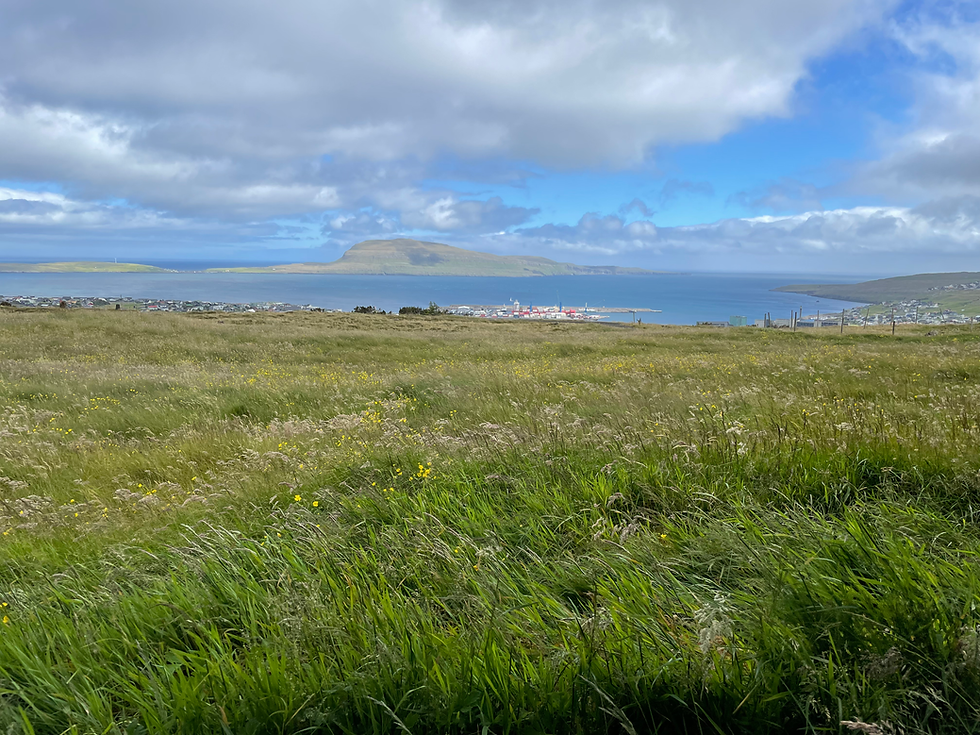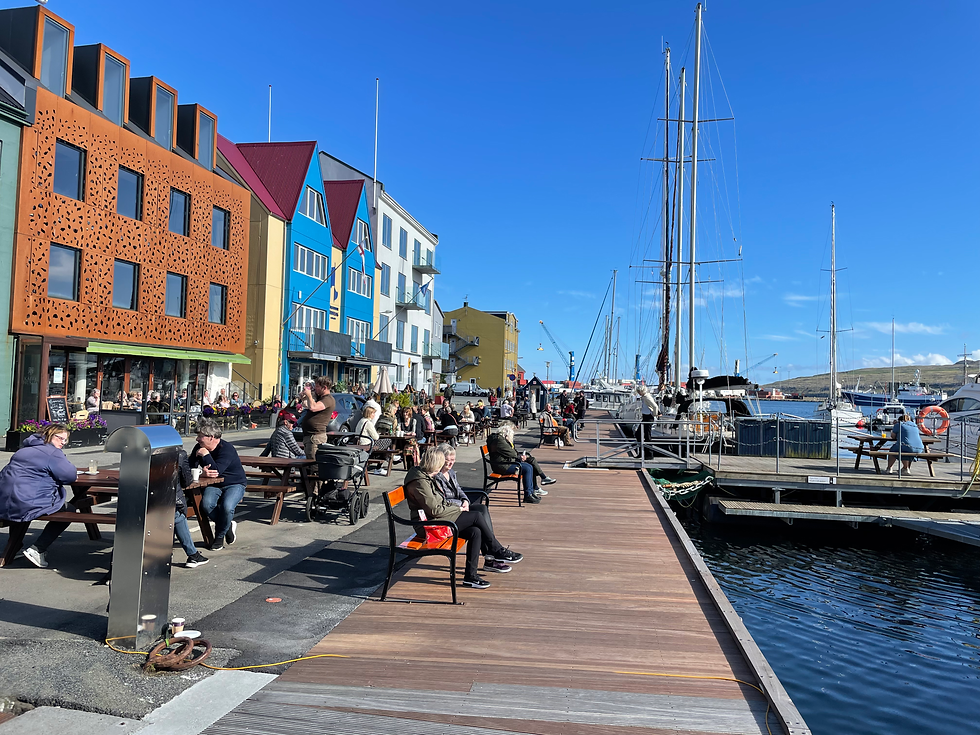Let's go to the Vikings!
- lavieenroute
- Aug 11, 2023
- 5 min read
18 windy islands in the North Atlantic, far away from everything, inhabited by significantly more sheep than people. What a wonderful place for a summer adventure.
280 rainy days a year, average maximum summer temperatures of 12 or 13°C, wind everywhere. Those who want to spend a leisurely beach vacation are best off heading into other directions. For everyone else, the Faroe Islands are a memorable destination in a class of its own.
Already the landing at Vágar Airport announces it: the boundaries between land, water, fog and sheep start to blur. The cockpit crew must have nerves of steel, because there is not a single stretch of flat land in sight from the cabin that would give an airplane room to land.
And yet passengers actually encounter a modern terminal that offers them all services. Quickly the rental car is ready, it will be our four-wheeled travel buddy over the next few days. We leave the fog of Vágar behind us, nimbly cross the first tunnels and are a little overwhelmed by the grass-green color intensity of the sunny moments. And suddenly it spreads out below us, the small capital Tórshavn.
Find the capital

It takes a moment for perception to adjust and also to understand that sheep have a significant role on the islands. Not least in road traffic, because all those ubiquitous brown, beige and black spots are clearly not rocks, but the woolly rulers of the highway, leaving no doubt about who was here first. Deep relaxation and deathly courage look very similar in the world of sheep.
A curious local
To be en route. On the Faroe Islands, that means spending time on the road. Those who feel like it may as well use the very well developed bus network. Yet those who want to be more independent drive themselves. Almost all inhabited islands are easily accessible, either via bridges, underwater tunnels or ferries. This way, you can also get to remote places, and in surprisingly little time, because there are no extreme distances to cross. Therefore, for our Faroe Islands week, we settled in the capital Tórshavn and explored all possible directions from there.
Spectacular coastlines

We discover the rich history of the island nation in historic villages, some run as museums, others inhabited as they always were. Kirkjubøur, for example, was once the spiritual center of the Faroe Islands and is now open to visitors - not far from Tórshavn. A bit further away from the action is Gásadalur, known for a very photogenic waterfall, Mulafossur. Especially during the island's typical rainy weather, an enchanted atmosphere lies over the village and the landscape.
Accessible by road since 2003: Gásadalur

If you choose to explore the Faroe Islands by car, you will find rather remote areas relatively quickly. However, apart from the supremacy of sheep, one should be aware of the peculiarities of the local road tunnels. Some of them are very well built, toll and artistically designed. Others are rather sober. In concrete terms, this means single-lane, long and unlit. If there is oncoming traffic, you have to pull over, turn off your lights and wait until other vehicles have passed. Right of way à la Faroe Islands.
Faroe Islands Tunnel: Optimism meets courage meets determination meets consideration

Nature. Sheep. Water. Wide sky. And in the middle of it all, Tórshavn, the capital city of 13,000 inhabitants. Those who know Copenhagen may feel a little reminded of it at the harbor, which is not surprising, since the Faroe Islands are an autonomous part of the Danish Kingdom. Given its size, Tórshavn certainly has a lot to offer - for example, a lively restaurant scene, live public concerts on summer evenings, an amazingly diverse mall or a government district you can touch. The distances are never far and thanks to the northern location, the summer evenings are long.
Summer in the (little) city - sitting outside really is an option

Like many Nordic nations, the Faroe Islands have a long democratic tradition, and the history of their parliament begins as early as 900th, back in the times of the Vikings! And even today, political life in Tórshavn is very much alive. The opening of the Løgting - as the parliament is called - falls every year on the national holiday, Olaf's Day or Ólavsøka. This means that at the same time there is also a big folk festival that lasts for several days - a worthy setting for a democracy, don't you think?
Up close: The parliament building and various ministries


The Faroe Islands have a lot in store for foodies. Known far beyond the islands is the restaurant Koks, decorated with two Michelin stars - and unfortunately closed at the time of our trip. But you will not leave Tórshavn hungry. Two addresses in particular should be highlighted: ROKS and Restaurant Katrina Christiansen. Both offer Nordic cuisine comme il faut, albeit in a very different way. ROKS is wild, unconventional and nonchalant, even in its service. At KC, the experience is a touch more traditional, very cozy, attentive and refined. Both restaurants are a joy to visit and allow an all-around look into the culinary tradition of the Faroese.
For full immersion, there is a way to connect with locals while experiencing the simpler country cuisine. The concept is called "heimablídni" and translates roughly as "hospitality at home". The name says it all: you invite yourself to a family's home, so to speak, pay something for the meal and in return you get an almost intimate insight into the local way of life. It is impressive how openly we were received by "our" hosts near Tórshavn and how relaxed we could eat, laugh and discuss with each other - even about controversial topics such as the whaling tradition on the Faroe Islands. We still find this bloody spectacle frightening.
Immersion into culture: Heimablídni are a real meeting place between cultures - and in our case even with a view





Comments